Franciscan Marks – Earthenware
Companies identify their products with marks. Marks are often referred to as back-stamps or bugs. These are marks used by Gladding, McBean & Co. and Interpace to identify their Franciscan earthenware products.
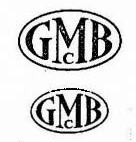
Collector’s nickname for this mark is the “oval GMCB mark.”
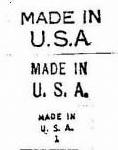
“Made in U.S.A.” in two lines, is found in three sizes,
very often without other identification. The stamp was used on items too small for larger stamps until 1984. Can be found in black, brown, and sometimes in blue ink.

The Tropico Pottery mark was used on kitchenware(mixing bowls) and art ware from April 15, 1935 to December 31,1937.

C 806 is the shape number in the Catalina Pottery line made by Gladding, McBean & Co.
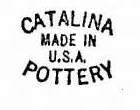

Used on Rancho tableware with or without Reg. U.S. Cat. Off.
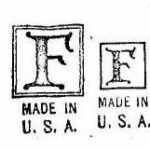
The first backstamp to indicate the Franciscan name was a square box: with the capital letter “F”, it was made to replace the old G.M.C.B. stamp and was used in two sizes.
Collector’s nickname for this mark is the “square F mark.“
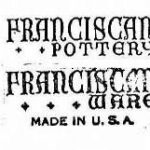
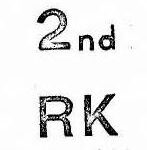
Two stamps – 2nd or RK were used on second quality ware sold in the Franciscan Shop. RK stands for Run of Kiln. This mark was replaced by using a tool to scratch the glaze over the mark which would signify the product was of second quality. Second quality wares had imperfections, usually undetectable to the human eye. Other imperfections which were obvious would be sold as thirds or scrapped.

“Made in U.S.A.” in one line.
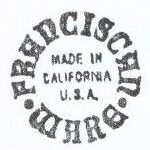

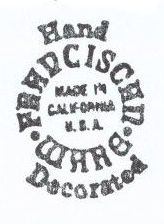
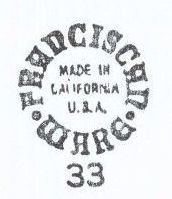
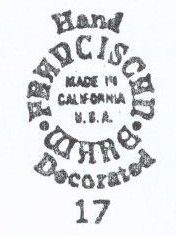

This stamp was used on hand painted earthenware only. The letter identified the day of a month, each month beginning with the letter A. The following two numbers refer to the decorator, and the last two numbers give the year. This system started in 1944 or 1945.

Collector’s nickname for this mark is the “half moon mark.”
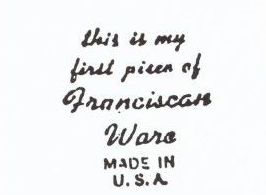
This stamp was used on the child’s cup and the child’s plate, sold as special prepackage only for Apple and Desert Rose. Also used on the child’s cup (aka the chocolate mug) given to high school graduates.
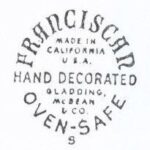
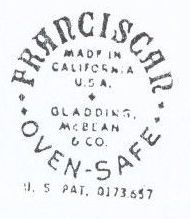
The patent number (0173.657) is used on the 1811 (Eclipse shape) dinner plate only. All other shapes used this stamp without the patent number.
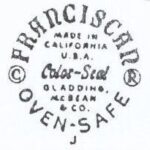
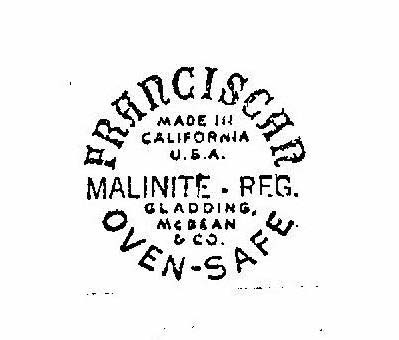
Mark used only on Coronado.

With the expansion of the Dinnerware Division in 1958, this stamp became one of a group of five more distinctive trade marks emphasizing the name Franciscan. The ink of the stamp went from black to brown ink.
Collector’s nickname for this mark and it’s variations is the “TV” or “TV screen” mark.“
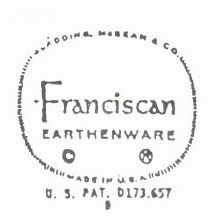
The patent number (0173.657) is used on the 1811 (Eclipse shape) dinner plate only. All other shapes and patterns used this stamp without the patent number. The copyright and registered marks were moved to below earthenware.

The patent number (0173.657) is used on the 1811 (Eclipse shape) dinner plate only. All other shapes and patterns used this stamp without the patent number. The copyright and registered marks were moved to the upper part of the stamp.
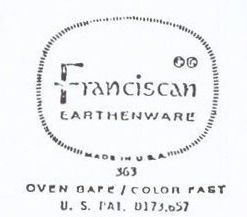
Gladding, McBean & Co. removed from stamp because of the merger of 1962. OVEN SAFE / COLOR FAST in one line under the stamp was put in use January, 1963. The patent number (0173.657) is used on the 1811 (Eclipse shape) dinner plate only. All other shapes and patterns used this stamp without the patent number. The 363 is a code for 3 being the decorator’s number (decorator #3) and the last two digits (63) the year (1963).
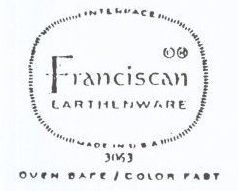
With the acceptance of the name INTERPACE as company wide identification, the stamp was changed again April, 1963 and the stamp was put in use July, 1963.
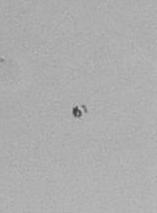
The decorator’s number is changed to a smaller stamp to be used in addition to the Franciscan mark rather than being part of the mark. This can be found anywhere on the bottom surface and sometimes is the only mark on a small item. The ink was either brown or black. In this example, the decorator’s number is 61.


Earthenware made by Franciscan for J.C. Penney

Earthenware made by Franciscan for J.C. Penney
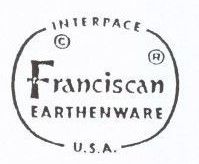
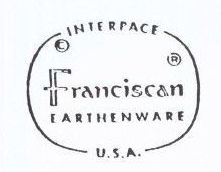



The first two digits 96 were the decorators number, and the second two digits were the year 73 (1973).
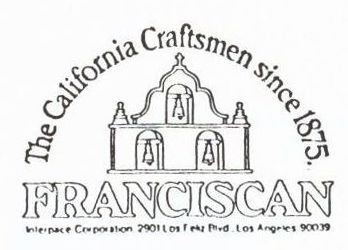
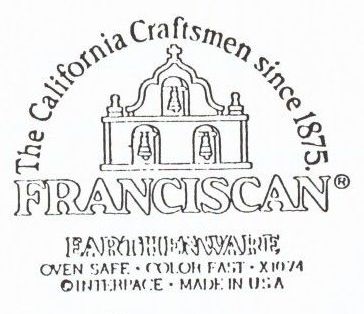

Used with or without pattern name.


The two to three digit number at the bottom of the stamp is the decorator number.
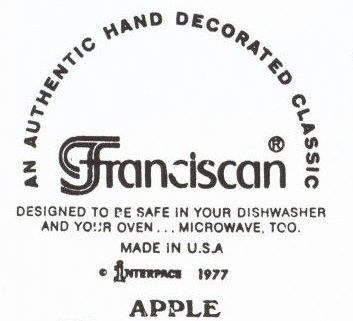
Used with or without pattern name. Stamp includes the year of production (1977) in this example.

Stamp includes the year of production after Interpace (1977 in this example).
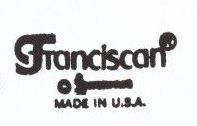
Stamp is Franciscan (Registered) and (Copyright) Interpace. Made in U.S.A.
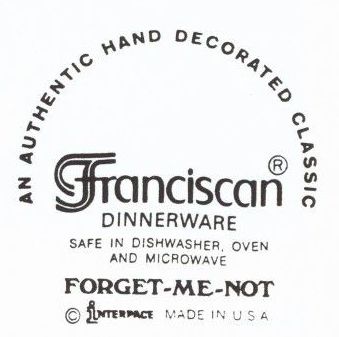
Used with or without pattern name.
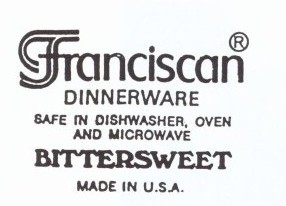
Used with or without pattern name.

Used with or without pattern name.

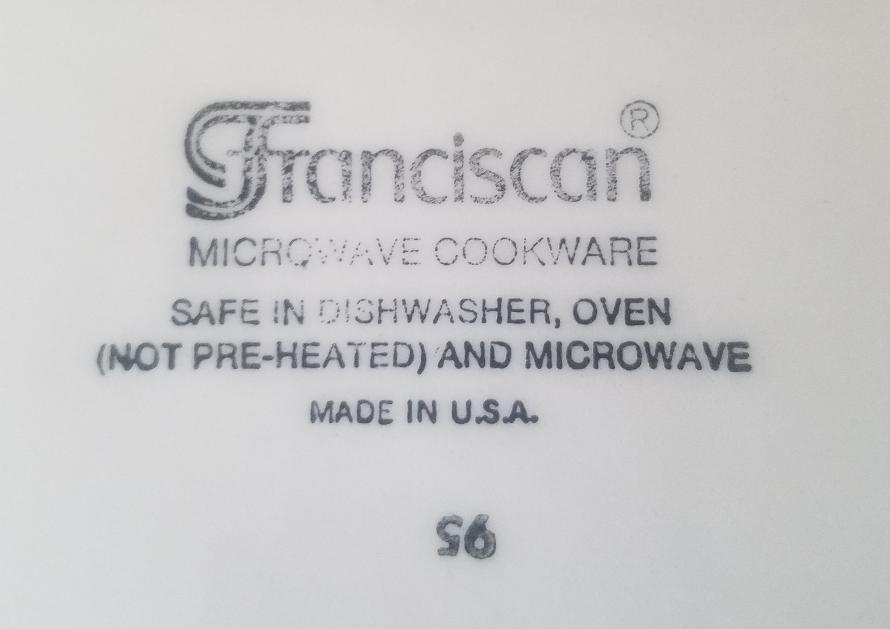
Used on the three piece microwave set which included a square snack plate, square baker, and oblong baker in the hand-painted embossed dinnerware lines. The number under the mark is the decorator’s number.

Used with or without pattern name.

The two to three digit number at the base of the stamp is the decorator number. Collector’s nickname for this mark is the “flying F mark.”

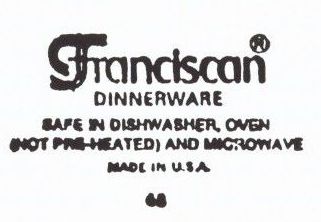
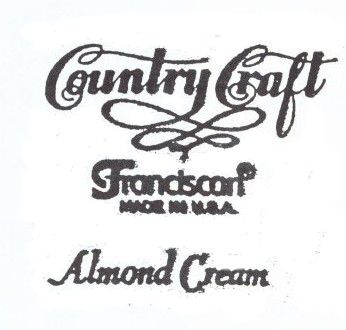

Marks after 1984
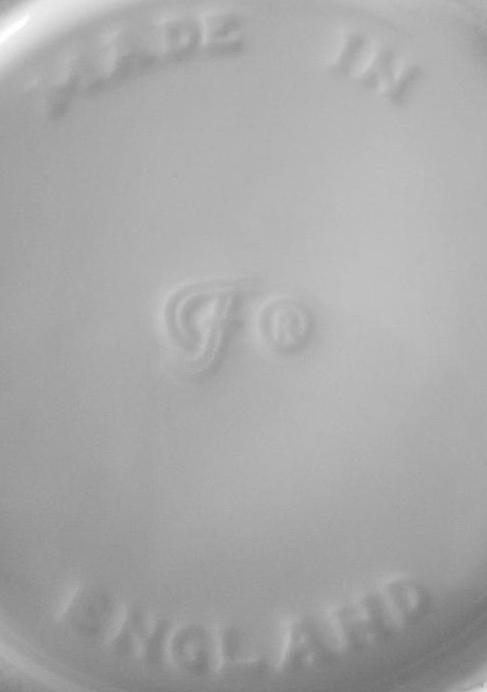
Made in England, in mold mark.
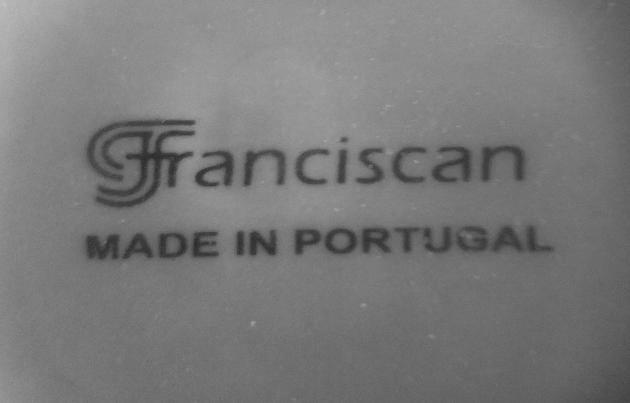
Made in Portugal. Complimentary pieces to those made in England were made in Portugal for Desert Rose, Apple, and Ivy.
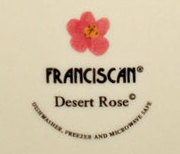
Made in China backstamp.